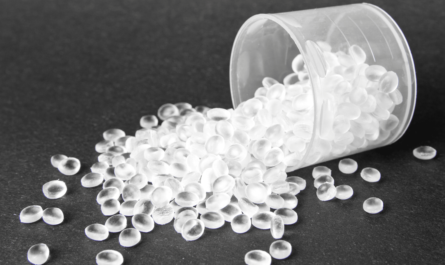Concrete is one of the most widely used building materials in the world. It has been used for thousands of years to construct buildings, pavements, bridges and more. However, plain concrete also has some drawbacks like low tensile strength, susceptibility to cracking and degradation over time due to exposure to environmental factors. Here comes polymer concrete – a composite material made by adding polymers to conventional concrete mix. Polymer concrete addresses many of the shortcomings of plain concrete and has properties that make it a promising construction material for the future.
What is Polymer Concrete?
The polymer binders used are generally epoxy, vinyl ester or methacrylate resins that coat the surface of fine and coarse aggregates. This alters the properties of the concrete making it more durable and stronger compared to conventional concrete.
Some key things to know about polymer concrete are:
– It is manufactured using the same aggregate materials used for normal concrete but instead of Portland cement, a variety of polymer materials are utilized as the binder.
– Common polymer binders include unsaturated polyester resins, vinyl esters, epoxy and methacrylate resins. Each type confers different properties to the finished product.
– Polymer concrete is sealed as it cures, reducing its permeability and vulnerability to external agents that cause degradation. This makes it more durable than plain concrete.
– It has higher flexural strength and tensile strength compared to ordinary concrete due to better adhesion of polymer binders with the aggregates.
– The polymer binders fill voids between the aggregates, enhancing the density and impermeability of the finished product.
Advantages of Polymer Concrete
The key advantages that make polymer concrete more useful than conventional concrete include:
Better mechanical properties
– As mentioned earlier, polymer concrete has much higher flexural strength (3-6 times) and tensile strength (10-15 times) compared to ordinary concrete. This makes it more durable and less prone to cracking.
Superior chemical and abrasion resistance
– The polymer binders protect the concrete from exposure to chemicals, moisture, chloride ions etc. It is highly resistant to abrasion, impact and corrosion.
Higher durability
– Being denser and less porous than plain concrete, polymer concrete is more durable and lasts much longer even under demanding outdoor conditions and heavy loading.
Fast setting and curing
– Polymer concrete sets and hardens much faster than ordinary concrete – anywhere from a few hours to a few days as opposed to weeks for normal concrete.
Low permeability
– The sealed polymer composite structure makes it highly impermeable and resistant to penetration and diffusion of liquids and gases.
Applications of Polymer Concrete
Due to the superior mechanical and chemical properties, polymer concrete finds application in the following areas:
In flooring and overlays – It is used for industrial flooring in areas requiring high chemical resistance, such as dairies, chemical plants, mining facilities etc.
In precast construction components – Manufacture of manhole covers, utility vaults, septic tanks, pipes, tunnel segments and more.
For repairs and reprofiling – Polymer concretes are commonly used for repairing deteriorated structures, filling pits and bumps, creating overlay surfaces etc.
In precise shapes and sculptures – Sculptures, decorative patterns, lattices and other architectural elements are easily cast in any shape required owing to fast curing.
Marine structures – Manufacture of items like seawalls, piers, boats and ship ballast as it does not corrode when exposed to saline water.
Waste containment – Construction of landfill liners and covers, wastewater treatment plant structures due to chemical resistance and durability needed.
Road construction – Used in bridge decks, parking lots, runway repairs where high early strength and fast curing time is required.
Upcoming Growth Areas
With continuous research and development, the use of Polymer Concrete is expected to grow significantly in the following emerging applications:
3D printing – Its properties make it conducive for extrusion-based 3D printing to construct on-site complex building components with minimal formwork.
Wind turbine foundation – Durable enough to withstand corrosion from soil and weathering over the 25-year design life of wind turbines.
Precast tunnels – Mass manufacturing of polymeric tunnel segments with ultra-high strength and durability for subway, underpass and pipeline infrastructure.
Alkali-silica reaction resistant concrete – Used to counter premature concrete degradation due to alkali-silica reaction in concrete structures.
Fiber reinforced polymer concrete – By incorporating various fibers, high early strength composites can be manufactured for structural applications requiring lightweight materials.
To summarize, polymer concrete represents an improvement over traditional concrete through its superior mechanical properties, chemical resistance and faster curing abilities. With ongoing advances, it has strong potential to transform infrastructure development by enabling more durable and sustainable construction solutions.
Note:
1. Source: Coherent Market Insights, Public sources, Desk research
2. We have leveraged AI tools to mine information and compile it




